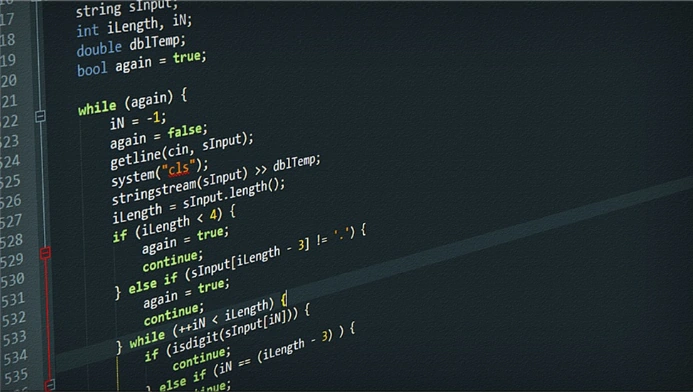Code quality is something every software developer should care about. It can have a dramatic impact on software quality, on the productivity of software teams, and their ability to collaborate.
There are many ways to achieve high code quality. This post will help you understand what are the most important aspects of code quality, and provide you with a review of the leading methods and best practices for achieving higher code quality in your organization.
What Is Code Quality?
Code quality is subjective. Each developer might have his own definition and values in terms of code quality. For example, one developer might think that a method with as few lines is high-quality code. Another developer might believe that exact same code is low quality because it's difficult to understand. Code quality is complex, and you need to consider several dimensions of your code to understand how to improve its quality.
4 Benefits of Code Quality
Despite the complexity of defining code quality, it's clear that writing high-quality code is important for several reasons. Below, you’ll find a review of the main benefits of quality code.
- Improved Software Quality
Improved code quality directly leads to improved software quality. The 2019 State of Code Review survey by SmartBear found that 90 percent of software professionals see code reviews and code quality as a primary way to improve software quality.
- Maintainability
High-quality code is simple, readable and easy to work with. It is easy to understand the implications of code changes without having to understand the entire codebase.
- Reduced Project Time and Costs
Consistently achieving code quality reduces both the costs and time associated with development projects. This is because high-quality code is easier to extend, debug and maintain.
- Sharing and Auditing
High-quality code that follows coding standards is more consistent, readable and easier to share with other teams or external partners collaborating on development projects. Additionally, quality code reduces the time required to onboard new members to a development team. High quality code is more likely to be understandable in internal or external audits of the software such as in regulatory audits. It will receive higher scores in the audit, and will be easier to fix and adapt according to auditor comment
Achieving Software Quality: Primary Strategies
Development teams can implement several strategies to improve both the quality of code and the quality of the software they produce.
Code Review
In the SmartBear survey, 27 percent of software professionals ranked code review as the best way to improve code quality. A code review is a systematic examination of source code, for the purpose of finding mistakes and improve coding practices, all of which contribute towards better quality software.
There are different ways to conduct a code review, as follows:
- Automated code review tools—automatically scan code for known errors and vulnerabilities. This is the fastest and most efficient way to check code and get feedback on errors because the tool does most of the work.
- A meeting-based code review—involves developers sitting down in one room together and examining code. Meeting-based code reviews are important because they facilitate knowledge sharing between different parts of the team, and can provide additional insights beyond those of automatic code scanning tools
- An over-the-shoulder code review—involves one colleague informally examining the code written by another colleague, and providing feedback.
Tool-based code reviews are the most practical method of carrying out regular reviews. According to SmartBear’s 2019 survey, 24% of software professionals conduct daily tool-based code reviews, whereas only 3.5% conduct daily meeting-based code reviews.
Unit Testing
Automated unit tests give developers early feedback on the quality of individual units of source code. Unit testing produces working code faster and with fewer bugs. Furthermore, failed unit tests pinpoint the exact locations of code defects, allowing developers to quickly fix errors and learn from them. Unit testing leads to timely delivery of working software, which is important in modern projects that use Agile methodologies.
Functional Testing
Functional testing checks whether the code delivers the functionality required by end-users. Functional testing is useful because it tells developers that their code is doing the right things and the system does what users expect it to do.
By testing code in this way, developers are encouraged to write code that makes the software behave as users expect. This type of test covers all the components in the system, unlike unit testing which only tests a very small set of components. Functional testing can also highlight unnecessary code that doesn't actually contribute anything to the software.
Continuous Integration.
Continuous Integration requires developers to frequently integrate their code into a central source code repository, often several times per day. Each commit is tested by an automated build tool, which detects errors as early as possible. Continuous Integration improves software quality because it helps you find bugs and reduces the risk of finding bugs in production.
Integration Testing
Integration tests combine individual software modules and test those modules as a group. This type of testing leads to better quality software because it demonstrates how well the system would work with different parts of the system functioning together.
Best Practices for Improving Code Quality
Development teams can improve code quality at the individual level and at a group level.
Individual programmers—guidelines for writing better code:
- Follow the style guide for the programming language you write and use descriptive names that make code easier to understand.
- Always use detailed comments that outline what each method does. Avoid copying and pasting the code.
- Always check code for errors and don't ignore those errors. Also, split code into short units that are easy to work with.
- Be consistent in how you code and make sure you understand modern security threats, including SQL injection and buffer overflows.
- Make your code portable by not implementing platform-or framework-specific functionality. Ensure your code is buildable, so you’ll be able to change the code easily and test those changes without breaking the existing code.
The following three guidelines can help promote code quality in development teams:
- Set expectations. Define clear expectations and requirements to ensure that all team members are on the same page with regards to good quality code and what the software should do.
- Developers need to communicate frequently to ensure the project remains on course for its planned delivery. A messaging app such as Slack provides a good platform for communication. Developers can integrate it with tools such as Github and JIRA for improved coordination and productivity. Regular meetings are also useful for understanding what each team member is currently working on.
- Code tracking. Use tools that track code changes, vulnerabilities, and bugs to ensure high-quality and secure software.
Conclusion
Code quality has a known impact on the quality of software. However, measuring code quality is not enough. It’s essential to understand and actually measure your software quality, and see if it is improving as a result of higher code quality. Use the strategies reviewed above to make your software stable and reliable for many years to come.







